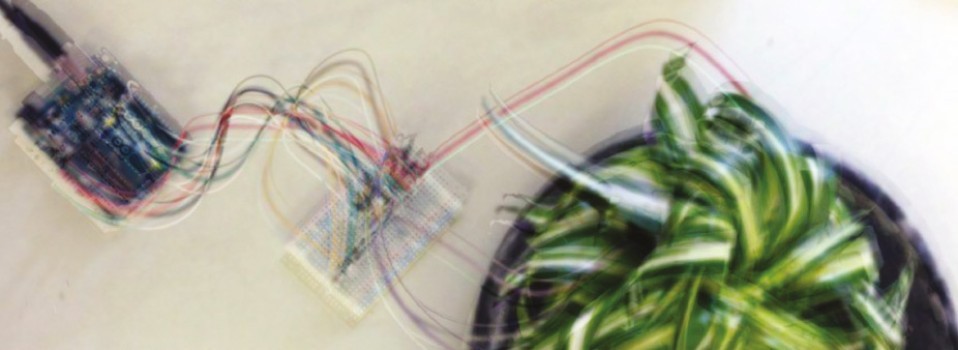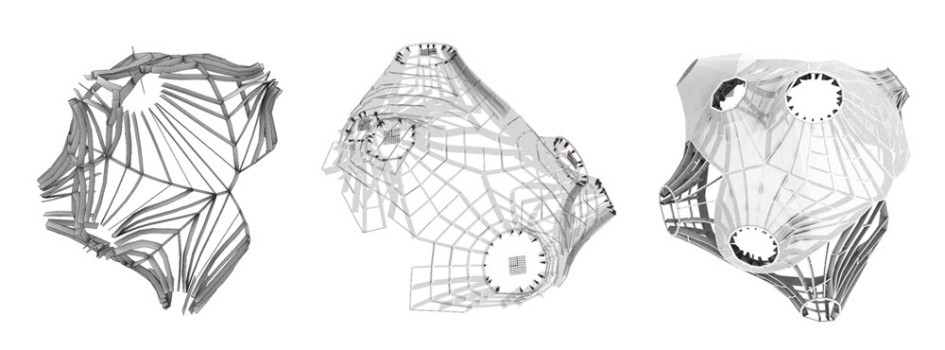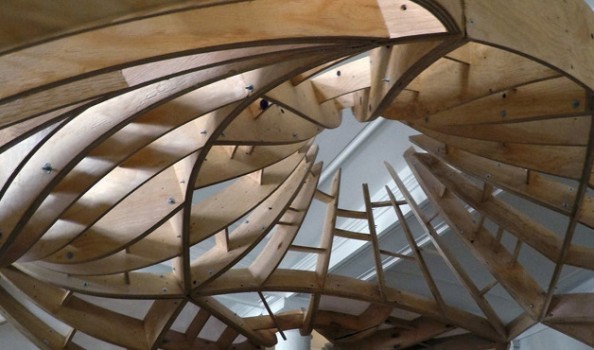KEPOS – Prototype of an urban garden pavilion
07 - 22 Jun 2017
KEPOS – Prototype of an urban garden pavilion
7 – 22 June 2017
Architecture by Angelica Lorenzi & Dennis Schiaroli,
under the direction of Galo Moncayo & Anna Gulinska
Welcome Address
Andrea Börner & Bernhard Sommer
Presentation
The presentation is of KEPOS (κῆπος: a garden, any place planted with trees and herbs), an urban garden pavilion, prototypical street furniture.
Combining knowledge on smart planning and smart technologies with citizen participation, the KEPOS installation highlights architecture’s integrating and innovative role in implementing sustainable urban developments. Actively engaging citizens, the installation is showcasing the potentials of information and communication technology (ICT) in public spaces for user interaction and participation, thus raising interest in architecture and public space among a broader audience.
Take Part—Take Care!
Connected to the internet, KEPOS engages via social media with the community, transforming its space into an active participant of urban life. Therefore, the pavillion is not only designed to provide a semi-private shelter in the urban context but it also engages by communicating its current status.
Using light KEPOS will show the current status of the plants’ need for water. At the same time when the plants are in need of hydration it will post on social media.
The engagement asked of the participants is to come to visit KEPOS to touch the plant in need of water thus activating its hydration. KEPOS will be monitoring and posting online the air quality, temperature and light conditions inside and outside of itself to inform on the micro-climate being created.
Follow the project on Facebook and Twitter to get updates on the development of KEPOS.
8:30 p.m.
Artist Intervention
Patrick Jaritz and Rüdiger Suppin, Nacktscanner (interactive installation)
In a contextual and spatial adaptation, the installation Nacktscanner [Naked scanner] forms a significant component of the KEPOS pavilion opening event, the pavilion itself constituting the installation’s interactive space. Using infrared lamps, infrared cameras, and video glasses, special overalls with hidden messages, as well as hidden scripts placed in the pavilion, three participants at a time can join in the “dance” of information exchange. The cameras’ and video glasses’ visual images are depersonalized and interwoven into the information flow, such that—above and beyond the customary information processing of seemingly expressly documented (seen and filmed) images—unexpected correlations emerge that can be understood only through active verbal exchange.
The events in the pavilion will be projected polyperspectively onto two screens in the MAK Columned Main Hall/Foyer.
KEPOS is a prototype realized at the Institute of Architecture of the University of Applied Arts Vienna, under the direction of the Departments of Energy Design and Urban Strategies, within the framework of the project Active Public Spaces (APS). In particular against the backdrop of technological innovations on the one hand, and of the necessity to convert our economic system to sustainable and renewable energy supplies and production on the other, within the context of the project a range of different studies are conducted, initiatives started, and prototypical schemes developed.
The project was co-financed by the Creative Europe Program of the European Union. Its realization was made possible by the kind support of BOLLINGER+GROHMANN Ingenieure, EXIKON arc&dev, K2 Dach&Bau, and Robotic Woodcraft.
For more information on APS and its detailed program visit the project webpage: www.activepublicspace.org
7 – 22 June 2017
Architecture by Angelica Lorenzi & Dennis Schiaroli,
under the direction of Galo Moncayo & Anna Gulinska
Welcome Address
Andrea Börner & Bernhard Sommer
Presentation
The presentation is of KEPOS (κῆπος: a garden, any place planted with trees and herbs), an urban garden pavilion, prototypical street furniture.
Combining knowledge on smart planning and smart technologies with citizen participation, the KEPOS installation highlights architecture’s integrating and innovative role in implementing sustainable urban developments. Actively engaging citizens, the installation is showcasing the potentials of information and communication technology (ICT) in public spaces for user interaction and participation, thus raising interest in architecture and public space among a broader audience.
Take Part—Take Care!
Connected to the internet, KEPOS engages via social media with the community, transforming its space into an active participant of urban life. Therefore, the pavillion is not only designed to provide a semi-private shelter in the urban context but it also engages by communicating its current status.
Using light KEPOS will show the current status of the plants’ need for water. At the same time when the plants are in need of hydration it will post on social media.
The engagement asked of the participants is to come to visit KEPOS to touch the plant in need of water thus activating its hydration. KEPOS will be monitoring and posting online the air quality, temperature and light conditions inside and outside of itself to inform on the micro-climate being created.
Follow the project on Facebook and Twitter to get updates on the development of KEPOS.
8:30 p.m.
Artist Intervention
Patrick Jaritz and Rüdiger Suppin, Nacktscanner (interactive installation)
In a contextual and spatial adaptation, the installation Nacktscanner [Naked scanner] forms a significant component of the KEPOS pavilion opening event, the pavilion itself constituting the installation’s interactive space. Using infrared lamps, infrared cameras, and video glasses, special overalls with hidden messages, as well as hidden scripts placed in the pavilion, three participants at a time can join in the “dance” of information exchange. The cameras’ and video glasses’ visual images are depersonalized and interwoven into the information flow, such that—above and beyond the customary information processing of seemingly expressly documented (seen and filmed) images—unexpected correlations emerge that can be understood only through active verbal exchange.
The events in the pavilion will be projected polyperspectively onto two screens in the MAK Columned Main Hall/Foyer.
KEPOS is a prototype realized at the Institute of Architecture of the University of Applied Arts Vienna, under the direction of the Departments of Energy Design and Urban Strategies, within the framework of the project Active Public Spaces (APS). In particular against the backdrop of technological innovations on the one hand, and of the necessity to convert our economic system to sustainable and renewable energy supplies and production on the other, within the context of the project a range of different studies are conducted, initiatives started, and prototypical schemes developed.
The project was co-financed by the Creative Europe Program of the European Union. Its realization was made possible by the kind support of BOLLINGER+GROHMANN Ingenieure, EXIKON arc&dev, K2 Dach&Bau, and Robotic Woodcraft.
For more information on APS and its detailed program visit the project webpage: www.activepublicspace.org





